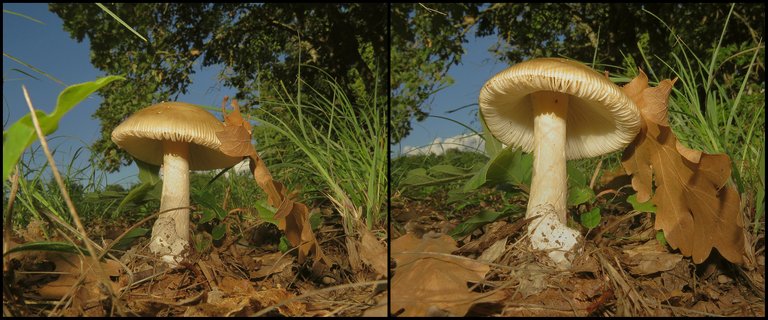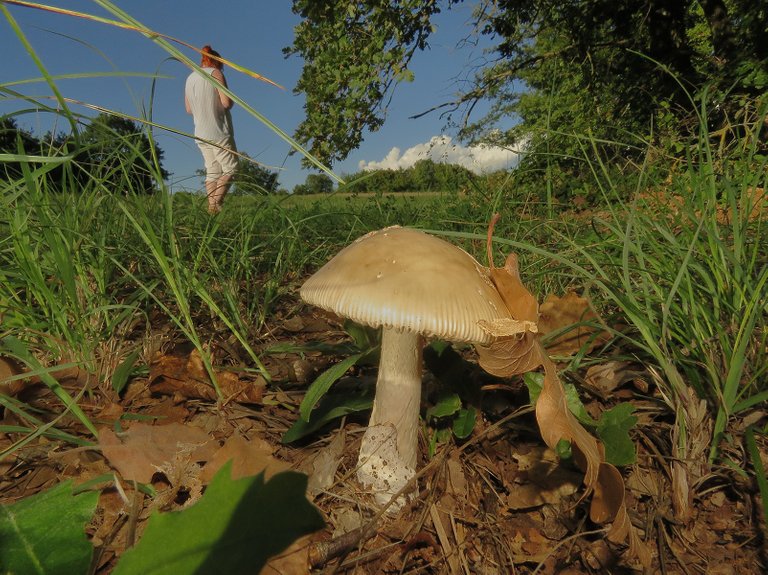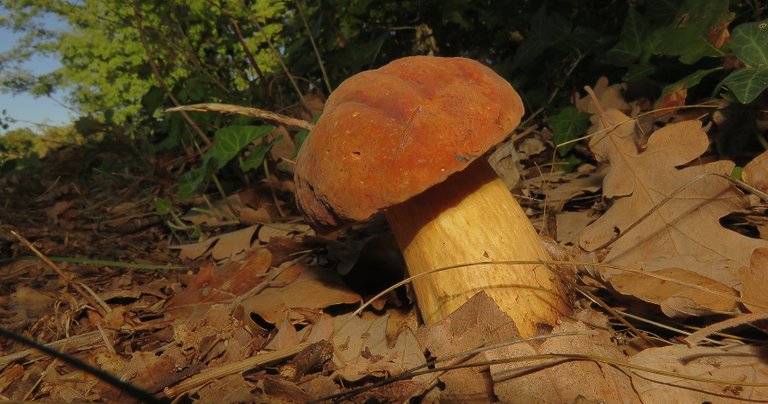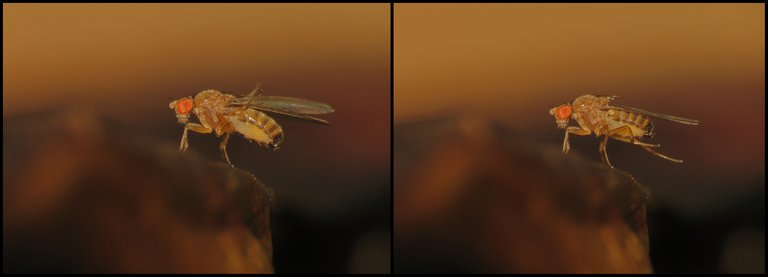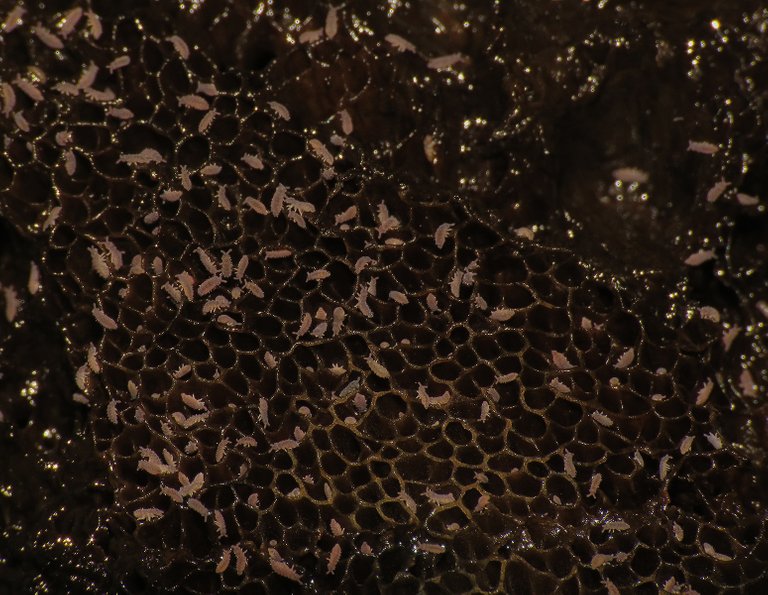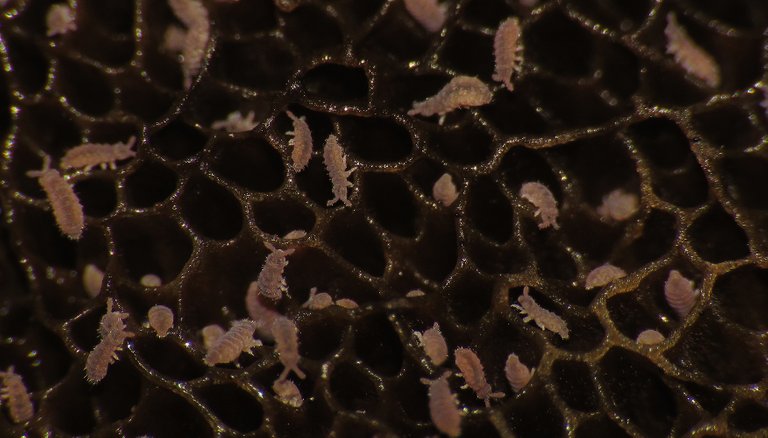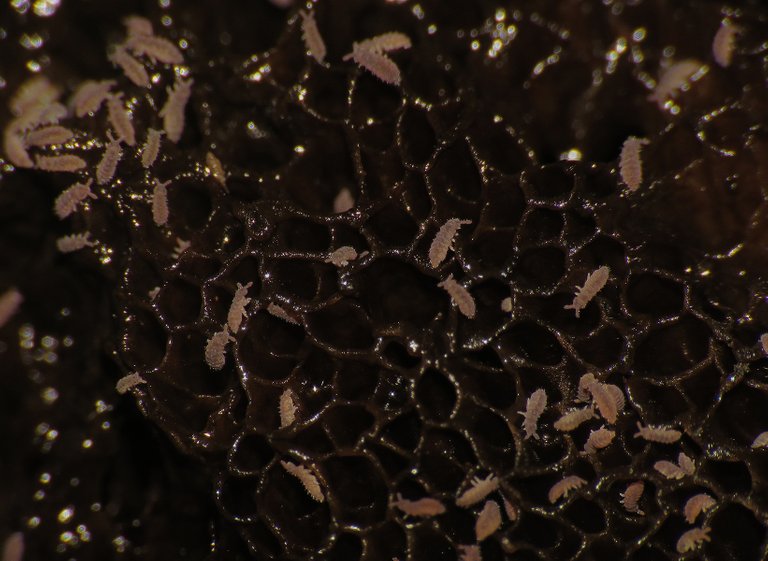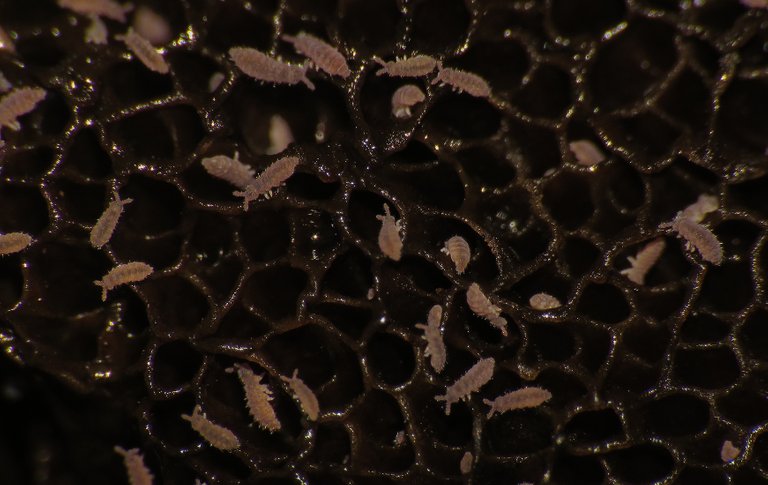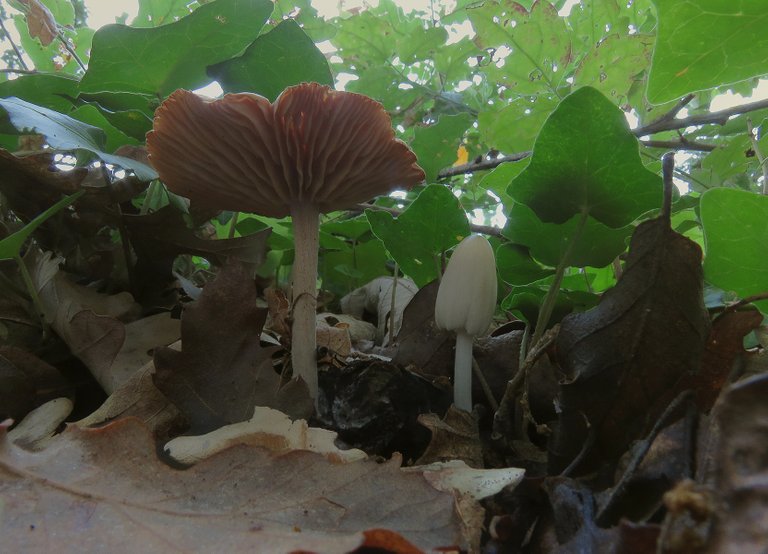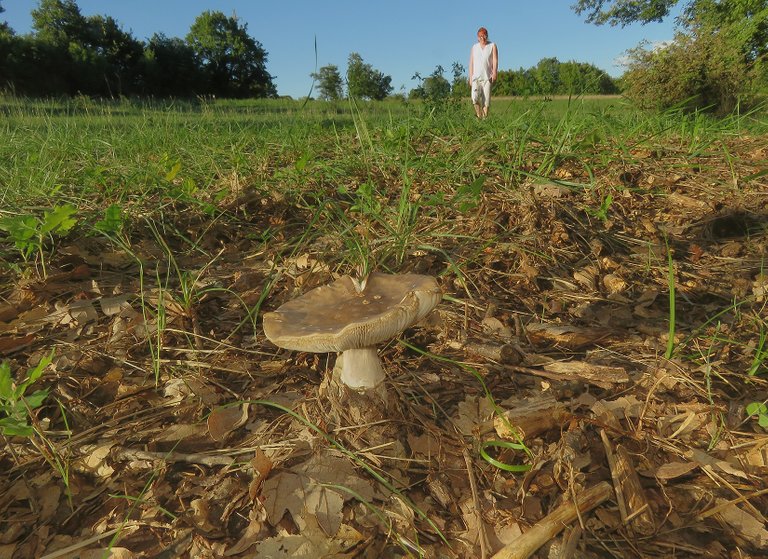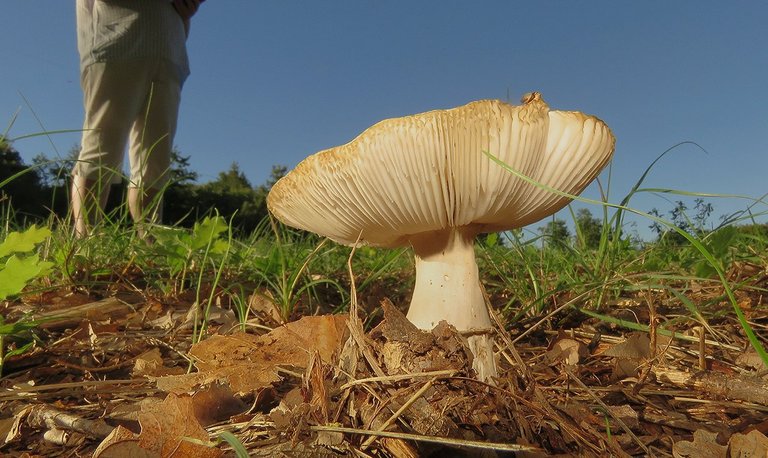This is my contribution to FungiFriday by @ewkaw
I drove about fifty kilometers today and parked my car by the side of the narrow country lane that leads to one of the small villages in the rural area around the small town that goes by the name of Zminj. I visited this place many times in the last couple of years, which means that the same stretch of meadow in between the forest and the road, already appeared here on HIVE quite a few times. Fortunately, every season brings something new, and even during the same time of the year, each exploration brings different details in front of the camera. This time, the focus was on mushrooms. In this opening picture made of two photographs, you can see the Amanita crocea ...
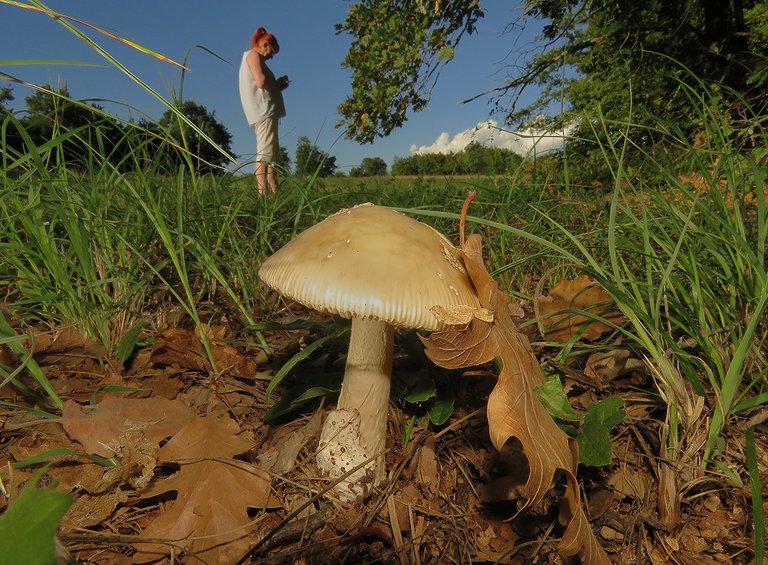
... a relatively big, robust mushroom that grows in a wide variety of habitats, around coniferous and deciduous trees, and often appears in grassy areas at the edge of the forest.
Like in all amanitas, these fruiting bodies emerge from the egg-like structure called volva.
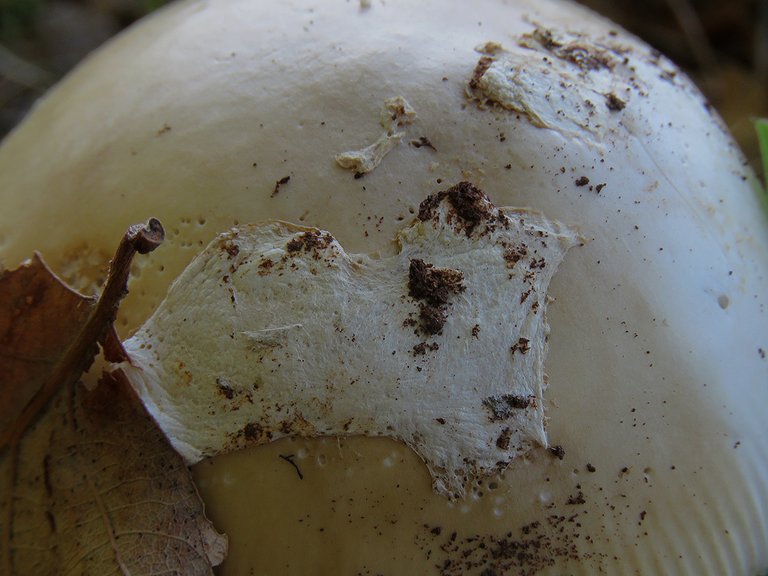
As the stalk gets taller and the rounded cap is spreading into a shape that resembles a lovely little parasol, the volva is ripped in pieces. Here you can see some of those fragments that remained attached to the top of the cap.
Amanita crocea it's an edible mushroom, but it looks pretty terrifying at first sight. It looks a lot like a death cap (Amanita phalloides), especially in the early stages when the fruiting body isn't completely developed. The most distinctive feature that can clearly set these mushrooms apart from the death caps is the belt of very visible furrows around the edge of the cap. The furrows are less accentuated on young fruiting bodies, so those can look very deadly.
A bit further, I came across this lovely little bolete. With quite a few similar boletes present in the area, I can't tell you which one exactly is this. It could be the boletus luridus. Maybe. Very, very maybe. I found plenty of similar mushrooms on the Internet. Each of them was a match when it comes to some characteristics, but nothing I found looked exactly, undoubtedly like the bolete in this photograph.
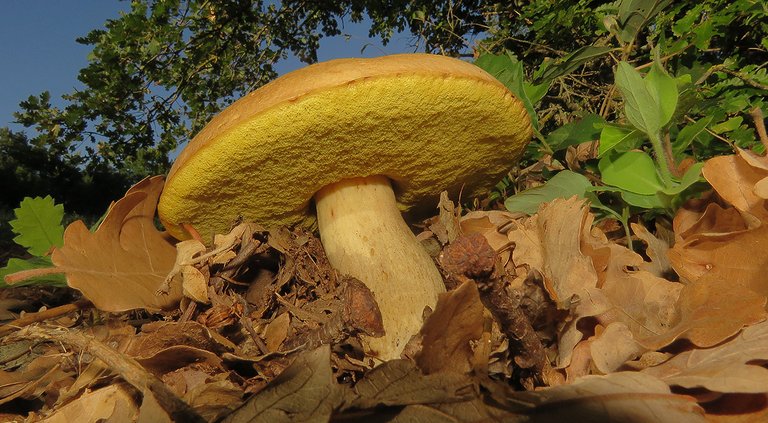
Five or six meters from there, I found this completely developed Hemileccinum impolitum. This species forms a symbiotic relationship with various oaks. Both boletes, this identified one and the previous unidentified one, were photographed under the first line of trees at the edge of the meadow.
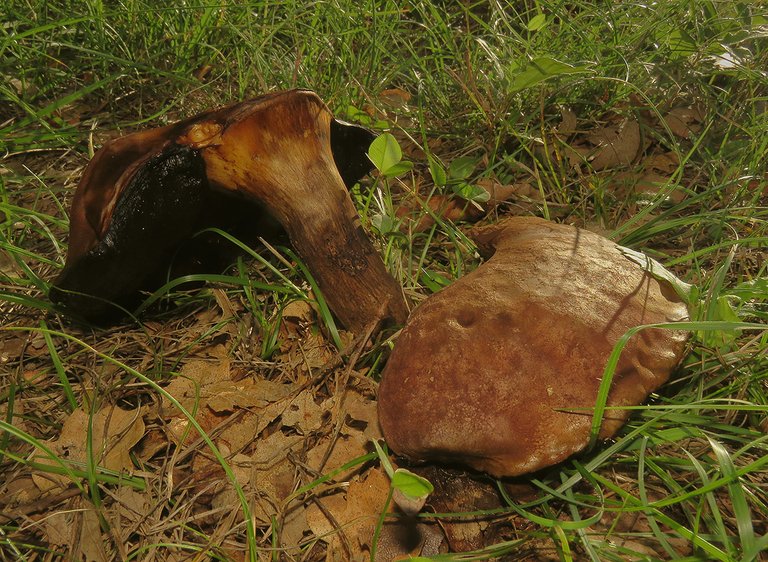
Pretty soon, I found another bolete in the middle of the open, grassy area. This one's cap was split in half and the entire mushroom was dissolving. Identifying a mushroom in these conditions isn't an easy task, so I didn't bother to try.
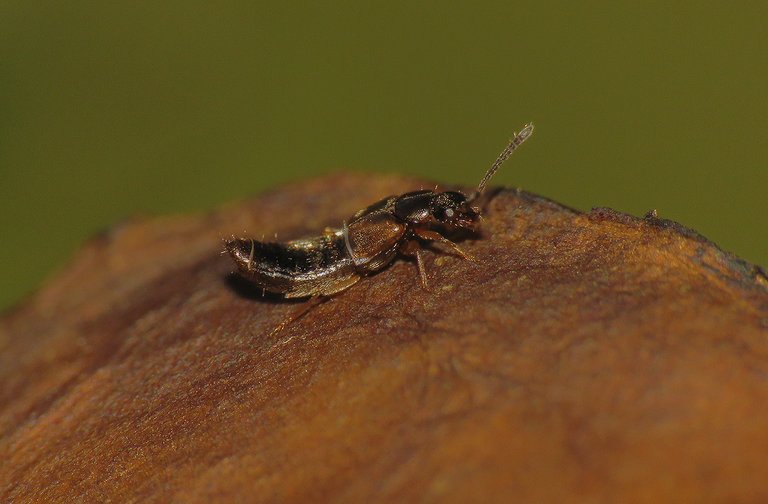
The mushrooms in their prime are definitively less smelly and prettier, but you can observe much more exciting animal activities around the decaying ones.
The minuscule Dalotia coriaria rove beetle was resting on the top of the cap.
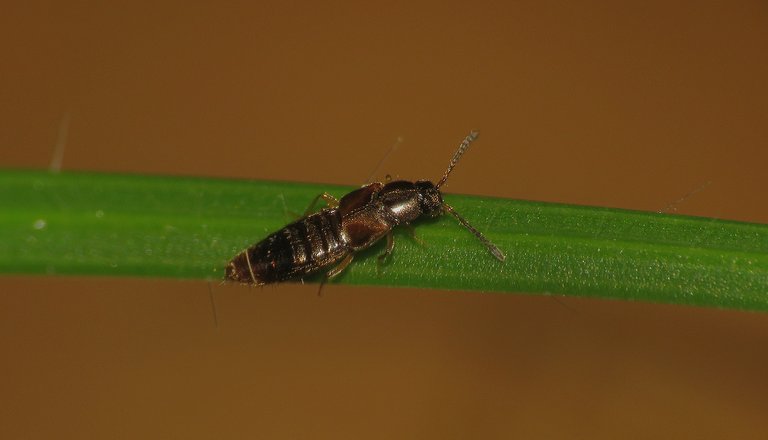
I found another one on the leaf of grass near the mushroom. The brown background was provided by the bolete. These beetles are fast predators that feed on larvae of the fungus gnats and various flies that use the mushrooms as food for their offspring. Meanwhile, under the cap ...
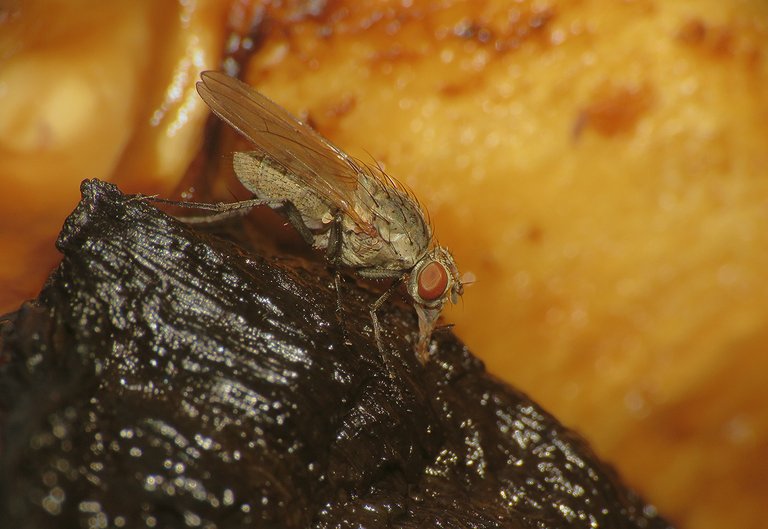
... the Adia cinerella, a fly from the Anthomyiidae family, was feeding on the partially liquified tubes that form the iconic, sponge-like part of the fruiting body.
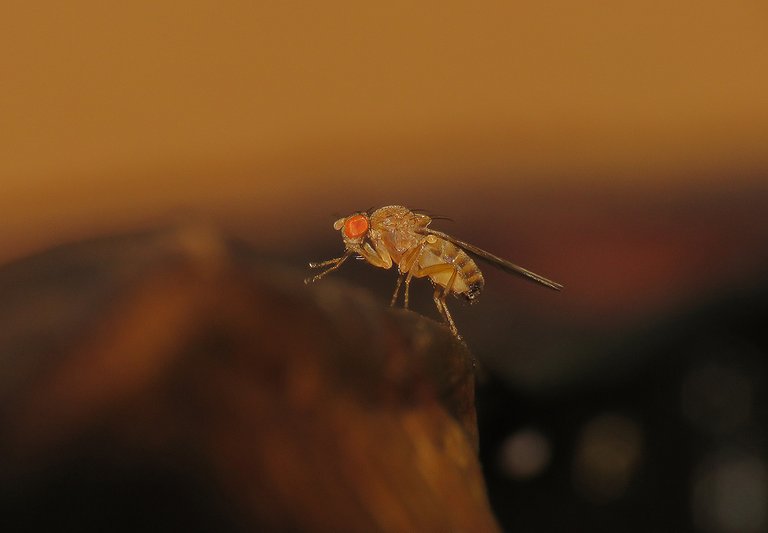
Soon another fly landed on the upper side ...
... and started cleaning its mouth, legs, and wings. This one was considerably smaller. Approximately half the size of the Adia cinerella. Can't tell you the exact species. The family is probably Drosophilidae.
All these flies and rove beetles were pretty interesting, but ...
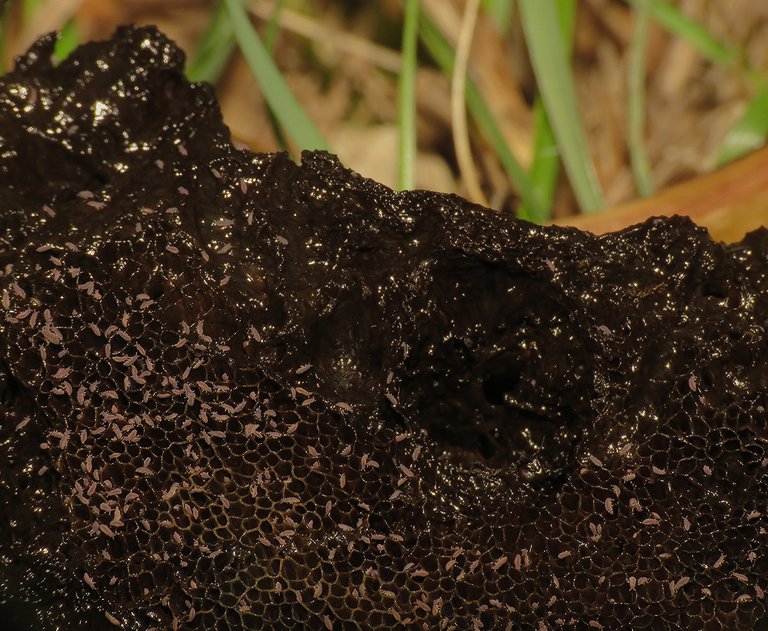
... only when I got my hands dirty did I find the real treasure. I overturned one of the two halves of the mushroom's broken cap. At first, I saw only a messy dark texture, but then ...
... when I took a good look through the macro lens ...
... I found myself staring at the colony of minuscule but very active creatures. They looked great on the intricate structure of the mushroom's underside. What looked messy from a distance, was kinda artsy and structurally elegant in macro view.
These are springtails. Can't tell you the exact species. The order is definitively Poduromorpha. The family? Probably Brachystomellidae. Or Hypogastruridae. I'm not sure.
Springtails love dark and humid places ...
... so when I turned their world upside down exposing them to the sun ...
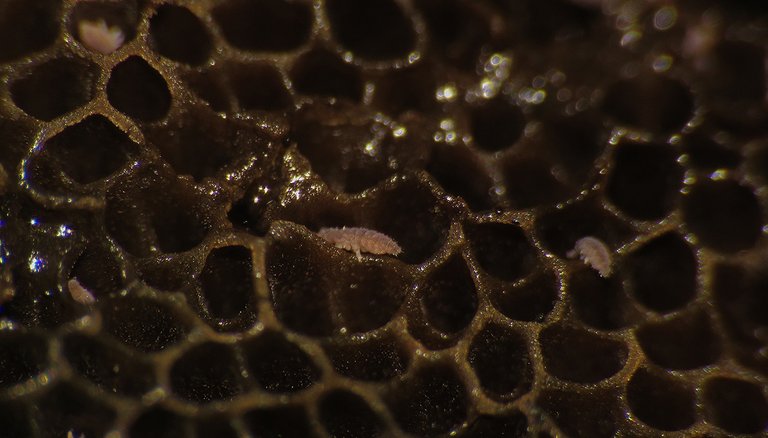
... they started retreating into the tubes provided by the dissolving bolete. Five or then minutes later, the last sign that the springtails are there, disappeared from sight.
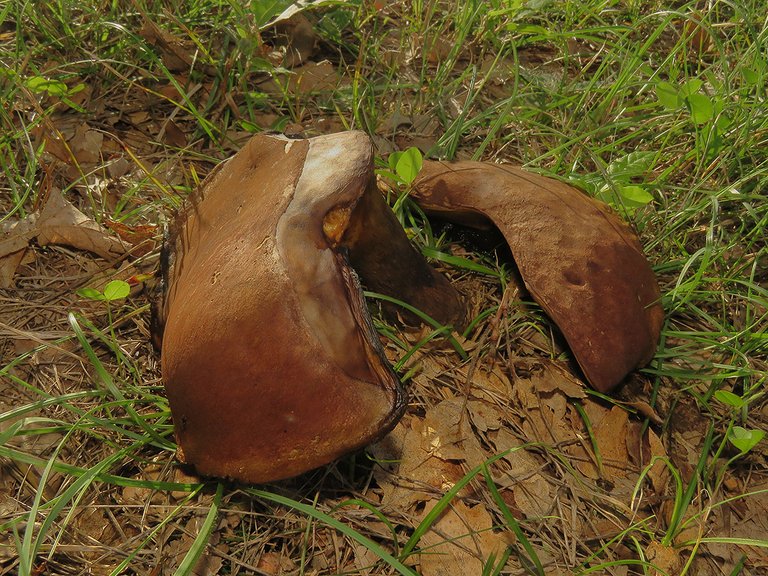
Soon I put that half of the mushroom back in the position in which I found it, and continued my walk along the edge of the forest.
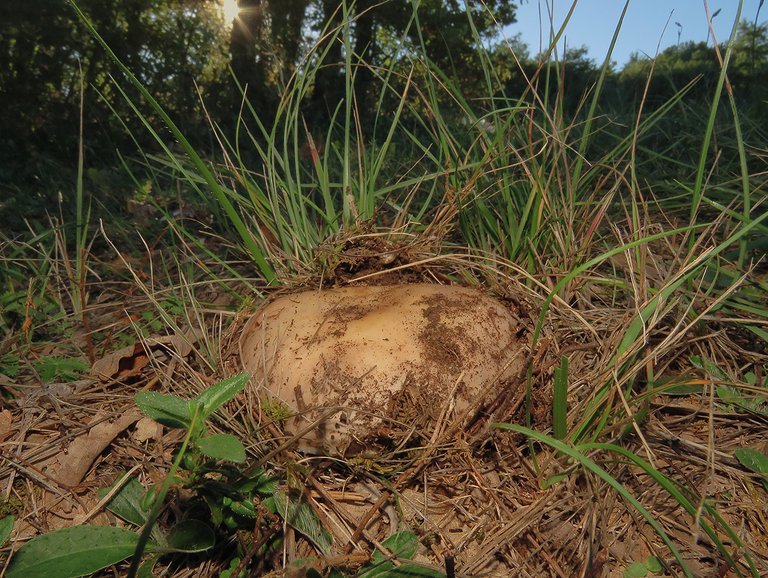
Some minutes later, I came across a mushroom that looked like some kind of potato half buried in the ground.
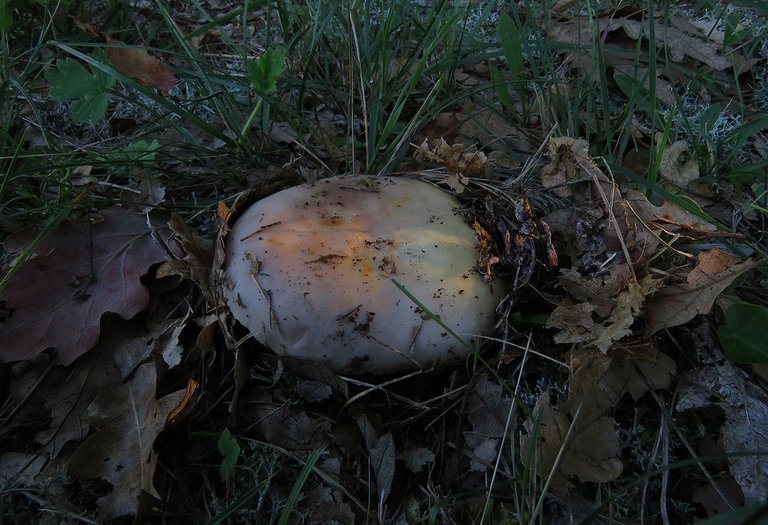
This is definitively a Russula mushroom, but I wasn't able to identify the exact species.
A couple of meters further, I encountered another mushroom of the same kind. This one was slightly taller and the cap was partially eaten, so I was able to see a fragment of the white gills on the underside.
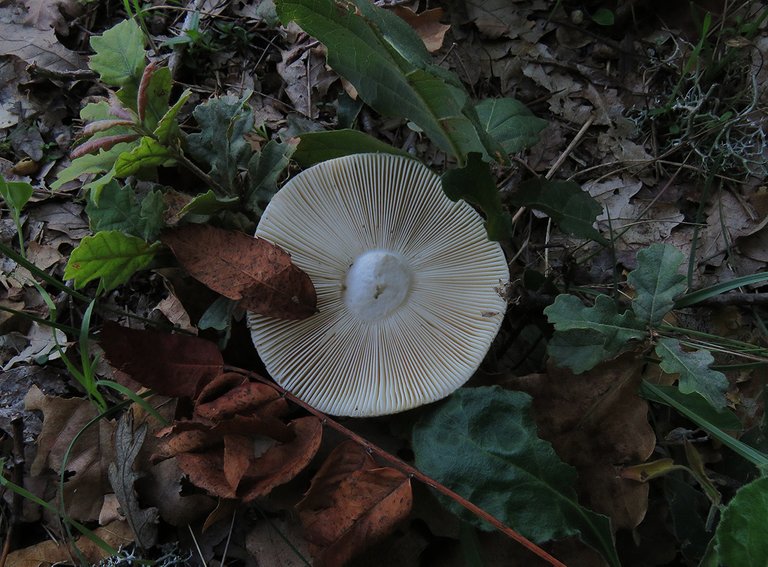
Someone passed this way not so long before me, and whoever it was, it was clearly not sure about the exact species. The cap of the Russula was cut, overturned, and left on the ground. The detailed inspection didn't end in a completely reassuring identification.

As a meal, this mushroom was wasted, but for me, it provided a good opportunity to take a good photograph of the gills that look surprisingly elegant when compared to the potato-like appearance of the young fruiting bodies that recently came out of the soil. After this encounter ...
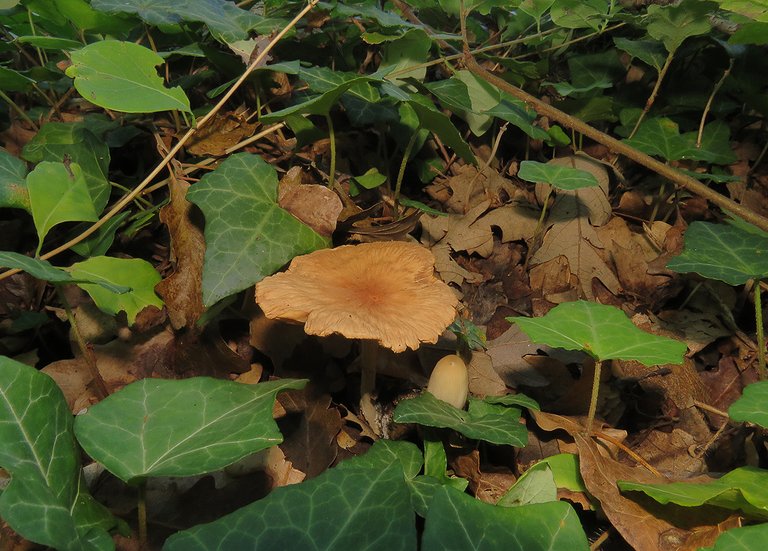
... I walked ten or twenty meters into the woods.
There, on the ground covered with ivy, in the shade of the oak trees, I found this lovely pair. On the left, you can see the completely opened umbrella of the Gymnopus peronatus. The smaller mushroom on the right is the Coprinellus xanthothrix.
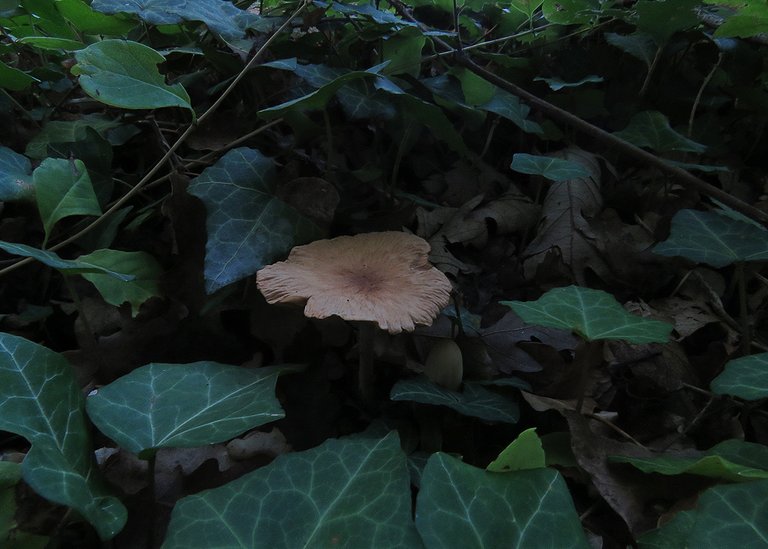
In the dense growth of ivy, only the Gymnopus peronatus was clearly visible from above.
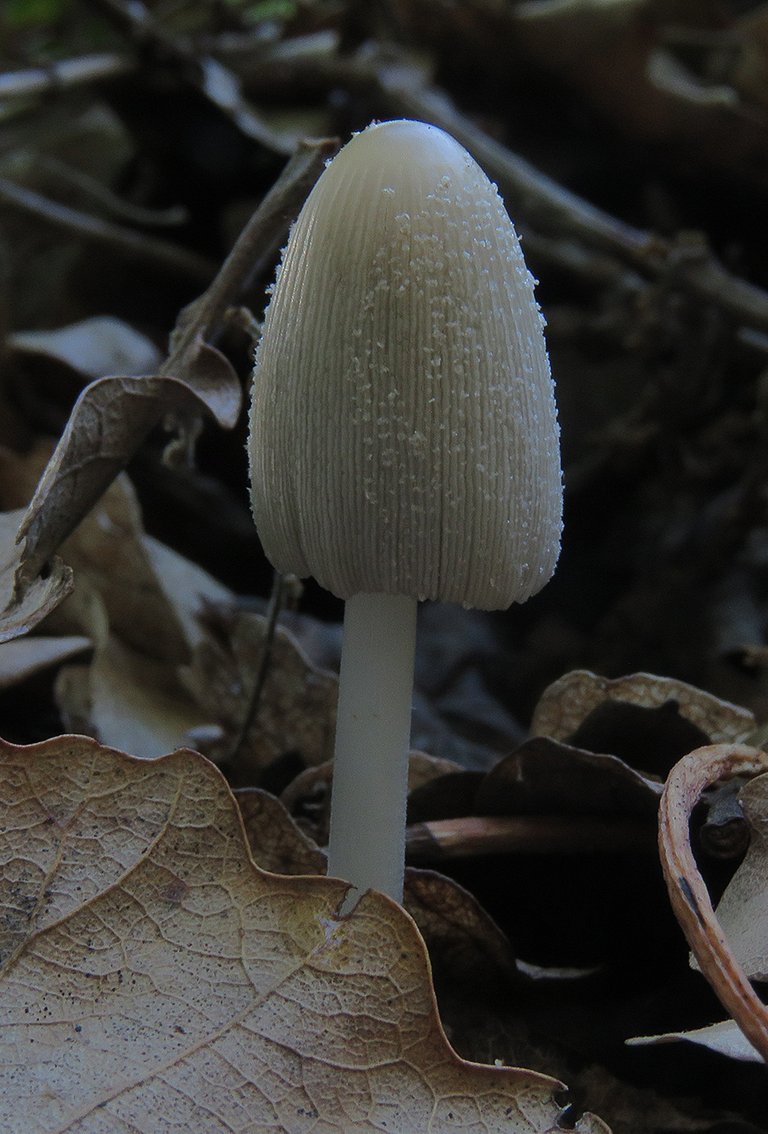
Not far from there, I found another Coprinellus xanthothrix, so I sat down to take this portrait.
The post started with a relatively big, robust mushroom. The Amanita crocea. In the end, on the way back to the car, I came across a fairly similar-looking mushroom that I wasn't able to identify.
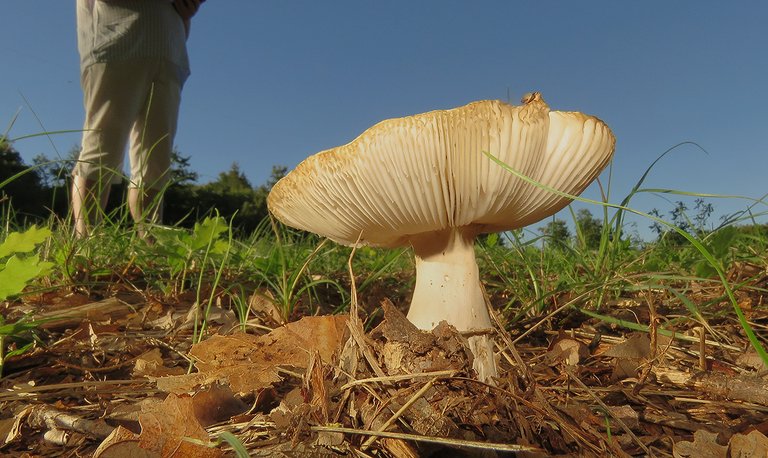
It was big, robust, and pretty elegant when seen from this low angle.
The following links will take you to the sites with more information about some of the protagonists of this post. I found some stuff about them there.
https://en.wikipedia.org/wiki/Amanita_crocea
https://www.first-nature.com/fungi/coprinellus-xanthothrix.php
https://en.wikipedia.org/wiki/Gymnopus_peronatus
https://en.wikipedia.org/wiki/Dalotia_coriaria
https://www.kerbtier.de/cgi-bin/enFOverview.cgi
https://www.first-nature.com/fungi/hemileccinum-impolitum.php
https://en.wikipedia.org/wiki/Adia_cinerella
https://en.wikipedia.org/wiki/Russula
https://en.wikipedia.org/wiki/Springtail
AND THAT'S IT. AS ALWAYS IN THESE POSTS, THE PHOTOGRAPHS ARE MY WORK - THE END.
